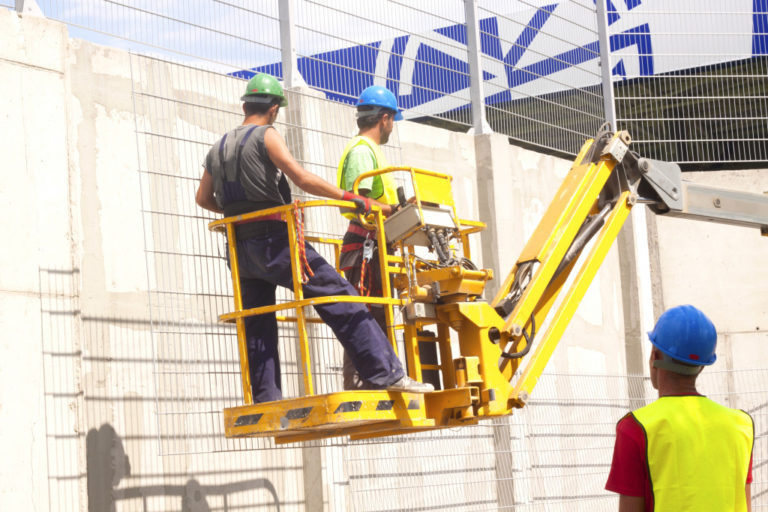Covid-19 has hit the construction industry hard. According to Construction Executive, about 37 percent of construction companies are going beyond their timelines and cost projections because of pandemic-related problems. Because of this, 72 percent of construction industry leaders worldwide predict that technological innovations will be a priority in the coming five years.

Project Management
Every construction project involves a lot of teams with a lot of people within each team, from the owner to the project manager, architect, and contractor. In the traditional model, all documentation is manual and on paper. Teams are working away from each other, some in offices and some on-site. Updates are difficult to share with everyone in real-time, and often, a lot of information gets lost, resulting in miscommunication and delays. At worst, costly mistakes happen.
Construction management software with artificial intelligence (AI) helps the project manager determine the viability of a project in its early stage. Everything is documented as digital data. The software provides dashboards showing analytics on financial, procurement, materials management, labor management, quality control, safety, and all other necessary aspects of the project. This is available in real-time to everyone involved. Any changes are immediately reflected so that there is no confusion on the most current version of the project. Collaboration is seamless.
The software includes reporting from various teams, making monitoring easier. In addition, it exposes problems and bottlenecks for immediate action, tracks daily work outputs against schedules, and highlights any lag. This improves efficiency and productivity, ensuring that projects finish as planned and on budget. The transparency throughout each project minimizes the possibility of contract disputes.
Workers’ Safety
BigRentz reports that while construction workers only comprise six percent of the country’s labor force, they comprise about 20 percent of work-related deaths in the U.S. It is, therefore, essential that, in addition to the current products for job site protection, technological innovations are applied in this area.
Exoskeletons, also called exosuits, are machines worn by construction workers to support and assist them in doing repetitive actions such as grabbing, bending, and lifting heavy loads, thereby increasing efficiency and productivity. It also provides them with strength, power, and balance while reducing fatigue and the risk of injury. These machines can either simply redistribute weight throughout the worker’s body or be powered and have motorized joints.
Construction Robotics
According to the Association for Advancing Automation (A3), 90 percent of construction robots in the market today are demolition robots. Because demolition is dangerous, robots spare human workers from the risk and free people from doing other tasks. Robots also work through the day and night without breaks. The initial investment in demolition robots is high, but companies recognize the long-term cost-savings and return on investment (ROI).
Mobile remote-controlled robots can be sent to areas that are hazardous or hard to reach to gather data for construction purposes. Robotic drones can do this to capture data from an aerial perspective. Both types of robots can also be used as part of the security of the job site. Self-driving autonomous construction equipment such as excavators and bulldozers are programmed to do the job without an operator.
Constructor Magazine reports on two semi-robotic devices that work in tandem with masons. The Material Unit Lift Enhancers (MULE) can lift weights of up to 135 pounds. The MULE picks up a block; the mason puts in the mortar and guides the block into place, then releases the MULE. One mason and one MULE work together.
For the Semiautomated Mason (SAM), the human mason is trained to do the programming and determine the layout of the bricks. The SAM does everything from picking up the brick, applying mortar, and putting it in place, even for complex patterns. Two masons and a laborer follow up to ensure quality control, striking the joints.
According to A3, the total value of the construction robot market is projected to reach $321 million this year, with a compound annual growth rate (CAGR) of 8.7 percent.
Virtual and Augmented Reality
Virtual reality (VR) has been of great use to builders during the pandemic as this allowed them to provide digital three-dimensional walkthroughs of finished projects online. This will continue to be a convenient option even after the pandemic wanes. Interested parties from far away can view a property before deciding if it is worth a physical visit.
Augmented reality (AR) differs from virtual reality because it overlays digital information in view of the real world. This is done through AR glasses or a mobile device such as a smartphone or tablet with AR capabilities. In construction, for instance, contractors can overlay design modifications on an ongoing project and show the effect to the owners through a tablet or smartphone. A worker wearing AR glasses can be given instructions on what to do in certain areas. He can also be sent safety warnings overlaid on specific areas in his view.
Virtual and augmented reality are valuable tools in the digital toolbox of builders. Experts expect these to gain even more popularity this year.
With all these technological innovations, this year is an exciting time for the construction industry. These will help builders recover from the pandemic slump.

